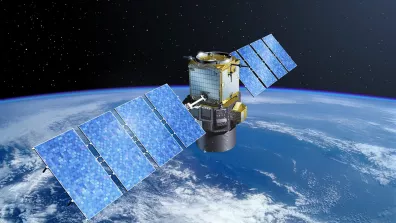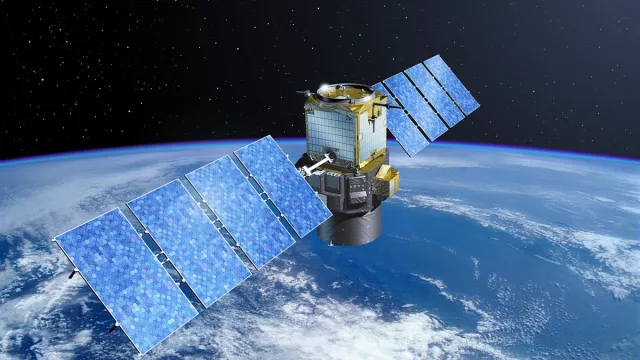Orbiting 705 kilometres above Earth, the CALIPSO minisatellite (Cloud Aerosol Lidar and Infrared Pathfinder Satellite Observations) analysed clouds and aerosols from 2006 to 2023 to better understand their role in shaping climate.
Key information
| Mission | Study the impact of cloud layers and aerosols on Earth’s climate |
|---|---|
| Domain | Earth observation |
| Launch date | 18 April 2006 |
| Partners | NASA |
| Where | Near-Sun-synchronous orbit at an altitude of 705 km after launch |
| Lifetime | Initially scheduled to end in 2011, the mission was extended to 2023 |
| Status | Completed |
Key figures
- 3 instruments
- 1-metre lidar telescope mirror
- 635 kg mass of satellite
- 5 mission extensions
Key milestones
- 27 September 2023: Decommissioning review marks end of mission
- 2020: Last three-year mission extension
- May 2017: Mission extended a further three years
- 26 June 2015: Mission extended two years
- 19 November 2013: Mission extended a further two years
- 26 September 2011: NASA extends mission two years
- June 2006: Instrument first light
- 18 April 2006: CALIPSO satellite launched by Delta II from Vandenberg Air Force Base (VAFB, USA)
- 26 March 2004: Payload tests begin
- 12 February 2004: Site acceptance of payload in Cannes
- 2001: Start of satellite development
- 1998: Project kick-off
Project in brief
The CALIPSO minisatellite—a spacecraft in the 500-kg class—scanned the skies daily to locate cloud layers and aerosols, measure their altitude and ascertain their optical properties.
Its goal was to better understand how clouds and aerosols affect Earth’s climate. Climatologists have long known that they play a key role in climate mechanisms, but they are yet to work out exactly how.
To accomplish its mission, CALIPSO was equipped with a lidar and telescope (a lidar is an instrument able to locate and analyse objects by bouncing a laser beam off them), a camera and an infrared imager. CALIPSO was also part of the A-Train, a constellation of Earth-orbiting satellites trailing one another by a few minutes.
Initially scheduled to end in 2011, the mission was extended to the end of 2023. The end of the science mission was announced in August 2023, with technology experiments followed by end-of-life passivation of the satellite in the last quarter
CNES’s role
CALIPSO was a joint CNES-NASA mission. CNES was responsible for the satellite and spacecraft bus (designed under contract with Alcatel) and the infrared imager (designed with Sodern), while NASA led the mission and supplied the payload and launch vehicle.
CNES contact
Atmospheric Physics and Meteorology subject matter expert
Adrien Deschamps
E-mail: adrien.deschamps at cnes.fr
Project news



